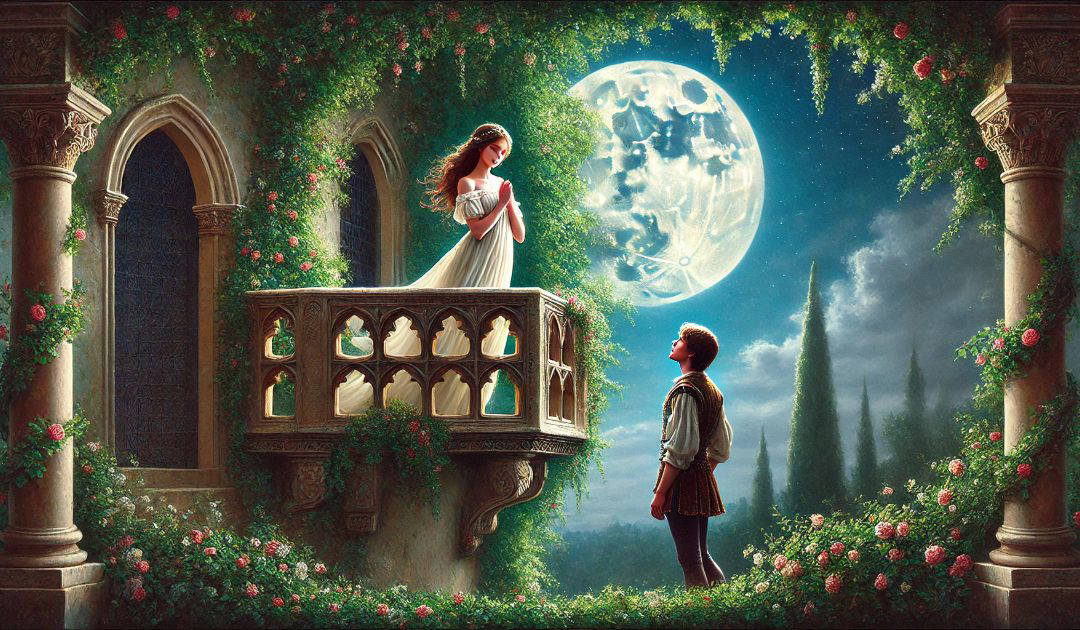On This Day tells me that on 29th January 1595 William Shakespeare’s Romeo and Juliet was first performed. It was published in early 1597. Romeo and Juliet is one of William Shakespeare’s most famous plays. It is a tragic love story that explores themes of love, fate, conflict, and the consequences of family loyalty.
The play is set in Verona, Italy, where two noble families, the Montagues and the Capulets, are embroiled in a bitter feud. The story begins when Romeo Montague falls in love with Juliet Capulet at a masked ball. Despite the longstanding animosity between their families, they quickly fall deeply in love and decide to marry in secret.
However, their love is doomed by the ongoing conflict. After a series of misunderstandings and tragic events, including the banishment of Romeo for avenging the death of his friend Mercutio, the couple’s plans unravel. In a desperate attempt to be reunited, Juliet fakes her own death, but the message fails to reach Romeo. Believing Juliet is truly dead, Romeo takes his own life. When Juliet awakens and finds Romeo dead beside her, she also takes her life.
The play ends with the families reconciling, realising the futility of their feud. Romeo and Juliet is celebrated for its poetic language, complex characters, and exploration of the intensity of young love. It remains a timeless classic and has inspired countless adaptations in literature, theatre, and film.
There is a tenuous connection between William Shakespeare and Sir Anthony Standen, as set out in chapter eleven of The Spy who Sank the Armada. In 1593 Anthony is freed from Bordeaux Prison by Anthony Bacon and taken back to England, where he begins working with Robert Devereux, Earl of Essex. In 1594 Essex accused Rodrigo Lopes, physician-in-chief to Queen Elizabeth I, of attempting to poison her. Lopes was a Portuguese converso of Jewish origin. He was convicted of treason and executed. It is thought that Lopes was Shakespeare’s inspiration for Shylock.
The other writing related anniversary for 29th January was the celebration of the first Burns Night by the Greenock Mother Club who later realised that Robert Burn’s birthday was the 25th of January.

